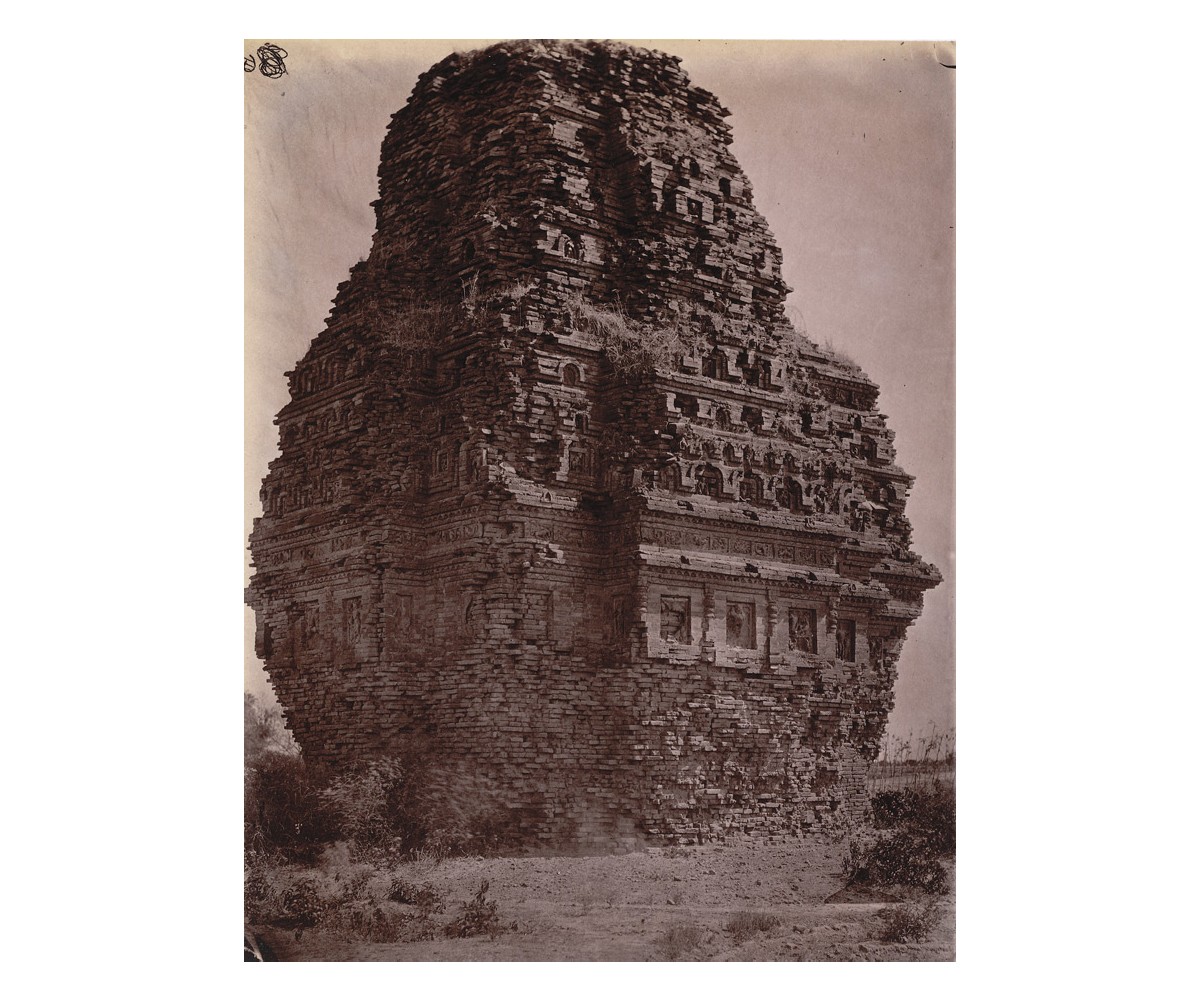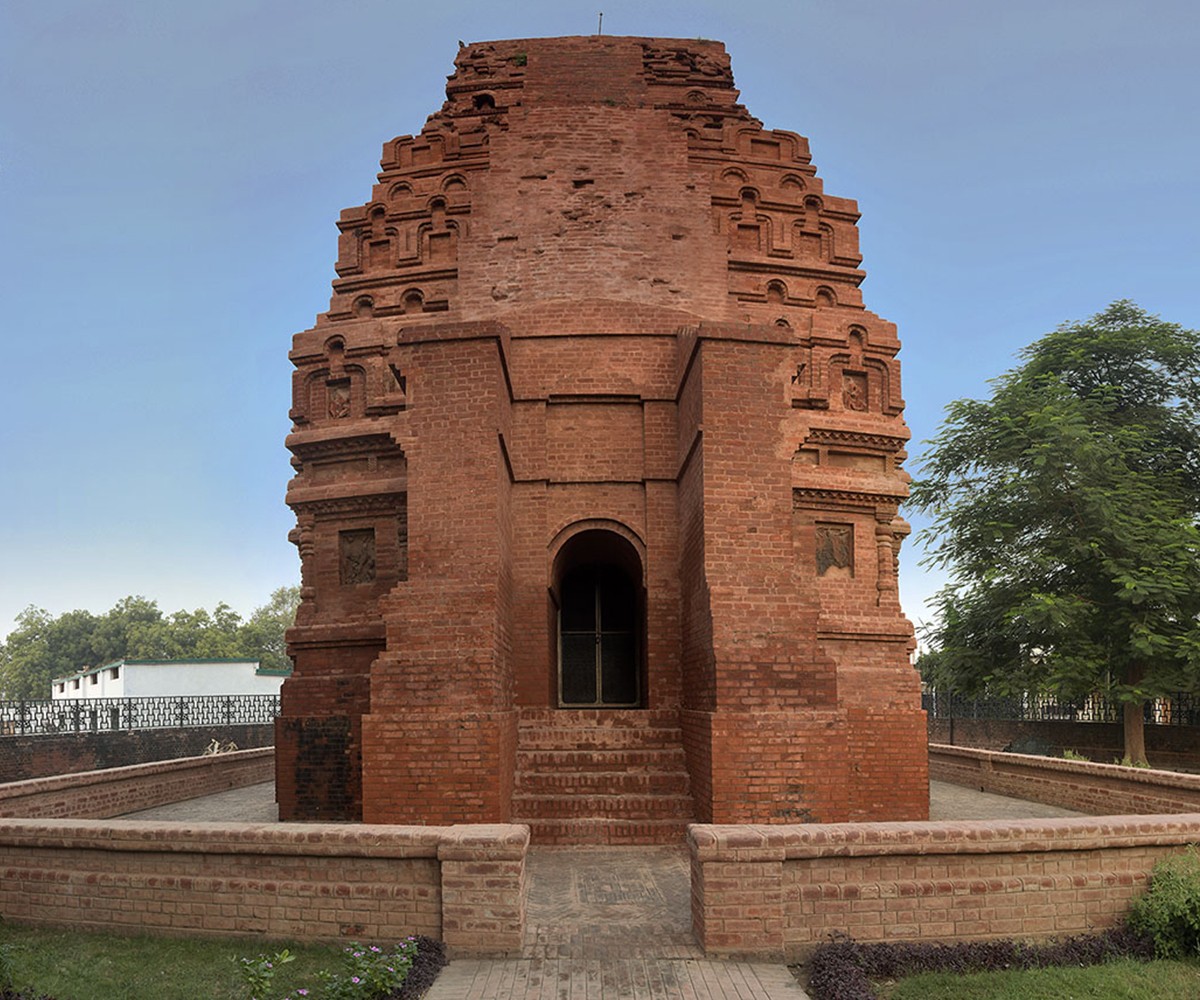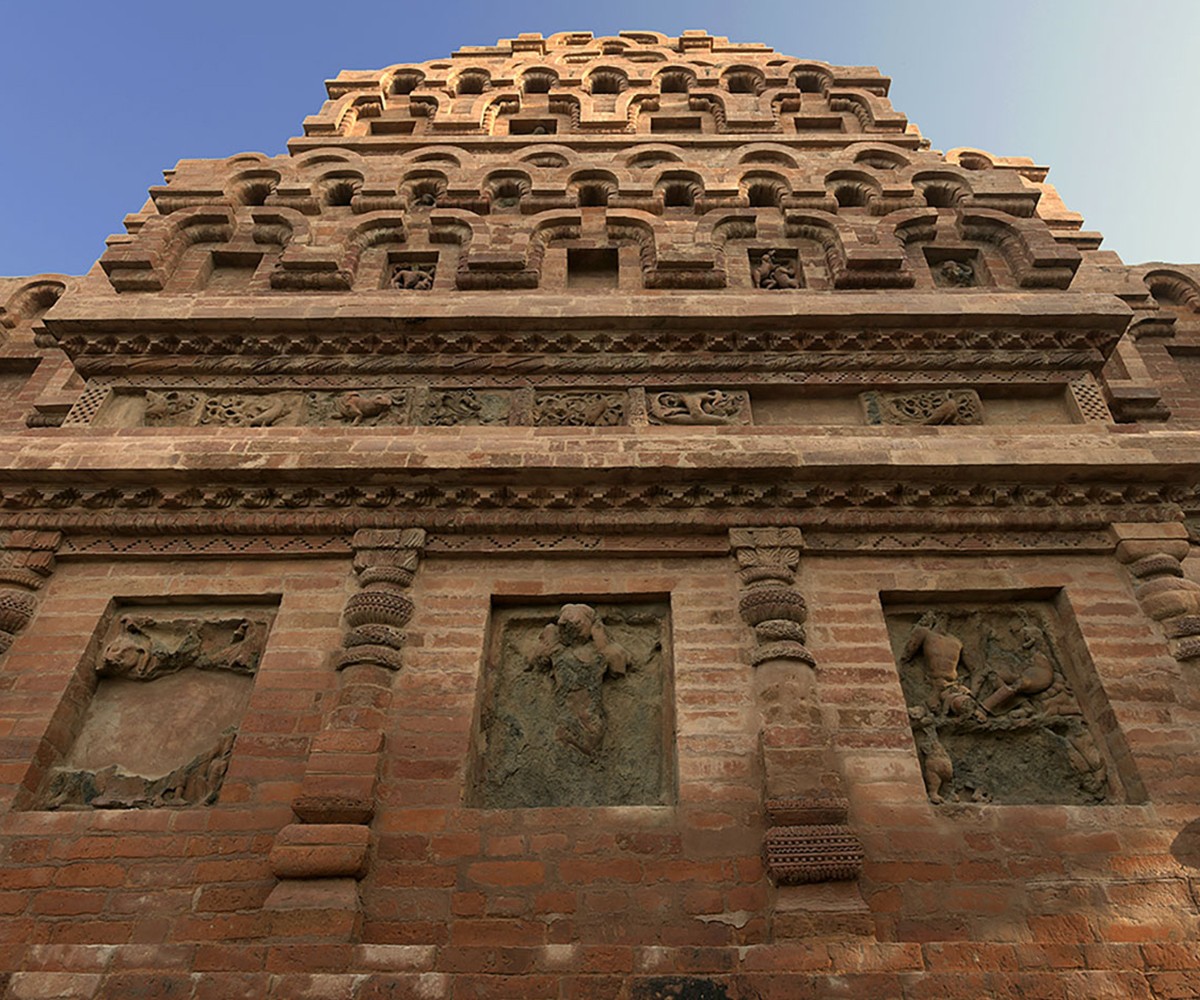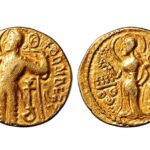Early Nagara Architecture is Established
400 CE
The Guptas conquer the last remaining Saka kingdom (in present-day Gujarat) and commission the Udayagiri Caves (in present-day Madhya Pradesh), establishing the precedent for the identification of kings with gods, especially Vishnu and his avatars. Sanskrit increasingly becomes adopted as a language of power, and is used in political as well as literary contexts.
Gupta hegemony in northern India is marked by the construction of a large number of brick temples to Hindu deities, the best surviving examples of which are the Bhitargaon Temple and the Deogarh Dashavatara Temple in present-day Uttar Pradesh. These are among the earliest known examples of a proto-Nagara architectural mode, financed by Gupta officials and feudatories. The core features of these temples are a shikhara (a tall, pyramidal superstructure) above the garbhagriha (main sanctum or shrine), sharing a jagati (common plinth) with one or more mandapas (prayer and ceremony halls), and no boundary walls.
Bibliography
Harle, J. C. The Art and Architecture of the Indian Subcontinent. New Haven, CT: Yale University Press, 1994.
Huntington, Susan L, and John C. Huntington. The Art of Ancient India: Buddhist, Hindu, Jain. New York: Weather Hill, 1985.
Chanchani, Nachiket. Mountain Temples and Temple Mountains: Architecture, Religion, and Nature in the Central Himalayas. Seattle, WA: University of Washington Press, 2019.
Feedback 
This entry appears in
Art in South Asia
Visit Timeline
Associated Timeline Events
First Published: March 11, 2024
Last Updated: July 2, 2024











